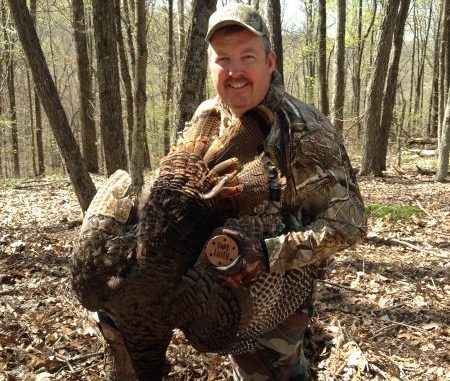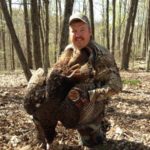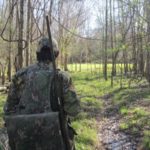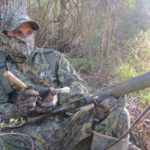
Before you can bag a trophy gobbler, you’ve got to know where to find one. Here’s how to turn a turkey’s mind-set into an asset.
Turkeys have the reputation for being notoriously difficult to kill, especially for novice hunters.
But with enough time spent in the woods it’s likely you can consistently bag birds each spring.
You’ve just got to have all your ducks in a row.
Where you’ll find turkeys in the spring isn’t always as clear cut as finding and patterning other game species like waterfowl, deer or small game.
The short answer is that all it depends on a variety of ecological and biological factors.
“The turkey is not particularly picky,” said Richard Buchholz, an associate professor with the University of Mississippi’s Department of Biology. “You can find them in pine plantations; you can find them in bottomland forests that are flooded seasonally; you can find them in uplands.
“They don’t mind — in fact, they do pretty well — in disturbed areas with agriculture mixed in with woods. So in that sense, in terms of habitat they can live just about anywhere.”
Buchholz, whose turkey research has included hen selection of mates during the breeding season, said turkeys are generalists and therefore will congregate just about anywhere, as long as there’s enough food and safe places to roost at night.
They’ll eat anything from blackberries and acorns to grass and fledgling, broadleaf plants — even a litter of field mice.
When looking for a prime hunting spot, scanning the woods for an abundance of food sources is a good start.
Once you’ve found a food source that appears turkeys are using — evidenced by a sighting of one or an abundance of tracks — it might make sense to hunt near the area.
Again, the short answer is: it depends.
During turkey season, which takes place during the beginning stages of the bird’s breeding season, hunters mimicking vocalizations of a gobbler or a hen often attracts toms looking for either a receptive hen or another tom to fight.
But, according to Buchholz, a tom reacting to a hunter’s calling has nothing to do with territory.
Rather, it’s all about the hens.
“Turkeys are not territorial,” Buchholz said. “Instead, what happens is the gobbler is trying to find groups of hens and defend them from the intrusion by other gobblers. Males spend a lot of time looking around trying to find individual females or small groups of females.
“If he can, he finds them and he tries to stick with them all day, and tries to roost near them so he knows where they’ll be in the morning.”
So, since territory means nothing to a tom, it can be hard to track them consistently over an extended period like one would pattern a deer. One day a gobbler might frequent one area of woods and the next day that same bird might be gone if it’s on the trail of a group of hens.
Even with potential food sources, likely roosting areas and perhaps even a few tracks indicating hen activity, the crucial piece to complete the puzzle remains: Where is your best hunting spot?
Conventional knowledge tells you that, with most any game species, animals that are hunted often display characteristics that can make it harder to harvest them.
That’s why many hunters on public land opt to lug their gear as far away from other people as they can to hunt animals that have had as little human contact as possible.
In studies conducted from 2010, 2012 and 2013 by the LSU School of Renewable Natural Resources and the University of Georgia’s Warnell School of Forestry and Natural Resources sought to further understand exactly how gobblers react to hunting pressure — with pretty telling results.
GPS trackers were fitted to several toms on Tunica Hills and Sherburne Wildlife Management Areas to track their movement before, during and after hunting season.
Another facet of the study tracked the movement of hunters searching for gobblers among the rugged hills of Tunica.
The idea was to use the hunter and turkey data to relate human movement to hunting pressure on turkeys.
The results showed that turkeys respond to varying situations independently, not necessarily uniformly.
But researchers were able to make a few key observations about gobbler behavior, including how many reacted to hunting pressure.
“Our sample (showed) about a third of our birds were shot and (of) the remainder — kind of 50-50 — some moved a lot, some didn’t move at all,” said Michael Chamberlain, professor of wildlife ecology at UGA and a researcher involved with the study. “Some birds readily came to a call and were shot right off the bat the first couple of days of the season.
Chamberlain said the gobblers that weren’t killed quickly exhibited one of two behaviors.
“They either hunkered down and stayed put wherever they were on the WMA and just tolerated really extensive amounts of pressure — hunters within 100 yards of them, routinely,” he explained. “One can only assume those birds had stopped gobbling, and they just waited out the end of the season. Once the season was over they resumed their normal activities.
“The other group of birds just left.”
When Chamberlain and his staff compared where groups of gobblers were located — the ones that ceased gobbling and those harvested early in the season — they noticed another trend.
Many of the toms that were presumed to have gone silent were living in areas near roads, trails that hunters frequented and patches of woods near easy access points for hunters.
The researcher said these birds mostly weren’t responding to repeated calls by hunters, and likely survived until the end of hunting season by hiding.
“Some of these birds have spent more than half their time within 100 yards of the trails,” Chamberlain said. “So, literally, all day they just hung around the same trails that the hunters were walking.
“Now if you have a bird that does that, you can’t get into that area without him knowing you’re there. So what shot do you have to kill that bird, really? Probably zero.”
That’s a telling piece of information for hunters.
“These birds that are dealing with pressure constantly, they are essentially unkillable,” Chamberlain said. “We assume they just stop calling and wait the season out, which is what our birds did.”
On the other hand, hunters had more success harvesting birds in areas in which toms received little hunting pressure, particularly during the first few days of the hunting season when pressure was minimal.
“These birds that don’t experience much pressure and all of a sudden they hear a call or see a decoy or whatever it is, you stand a fairly good chance at harvesting that bird,” Chamberlain said.
After human presence increased in some of the low-pressure areas, some birds that left the WMAs altogether often moved to surrounding private lands where hunting pressure was minimal.
“Some of these birds, when you bump them they’re gone,” Chamberlain said. “They take off and head for greener pastures, and other birds just hunker down and deal with it. Some of these gobblers, when they’re disturbed and when they’re spooked, they’ll travel a mile and then roost, and then hang out for however many days until they’re disturbed again. And then they’ll walk another mile.
“So it just really depends on the bird.”
Chamberlain suggested using a map to find an area as far away from roads and access points as possible, a move that will up the odds dramatically of finding a tom that isn’t pressured and one that will readily respond to calls.
The advice sounds simple enough, and many hunters say they hunt in isolated patches of woods to begin with — but many times that isn’t the case, according to Chamberlain’s research.
When Chamberlain and other researchers analyzed the data from hunter movements on Tunica Hills WMA, they learned many of the hunters did not actually stray far from access points — meaning many of them were hunting birds that had likely hunkered down and weren’t responding to calls.
“The bottom line is hunters don’t walk as far as they think they do, they don’t go as far from roads as they think they do and (in) most of the wildlife management area a hunter never sets foot …,” Chamberlain said.
Geismar hunter Chad Newcomer, who has chased turkeys from Nebraska to Indiana and is co-owner of Fat Lady Game Calls, has seen first-hand what pursuing turkeys in isolated sections of woods can do.
It’s not uncommon for Newcomer and a hunting partner to trek for miles through dense woods to reach an area in which turkeys have likely had little interaction with humans.
And it’s often in these deep, hidden sections of forest that Newcomer is the most successful.
“You will always be more productive on low-pressured areas than you will on high-pressured areas,” Newcomer said. “You can find low-pressured areas on public ground, but you have to go to extremes to distance yourself from your peers.
“Once you know you have separated yourself from the masses, it’s time to investigate for coyotes and other predation.”
He said that’s because turkeys aren’t only affected by human pressure but by predators, as well. So even if signs of humans are minimal, the presence of natural predators might mean turkeys could still react as if they’re being pressured, Newcomer said.
While locating a willing tom might seem daunting, Newcomer said doing so provides an extremely rewarding feeling — and could be a key to success over the long haul.
“Find one of these low-pressure honey holes, and it will produce for you year over year,” Newcomer said.





